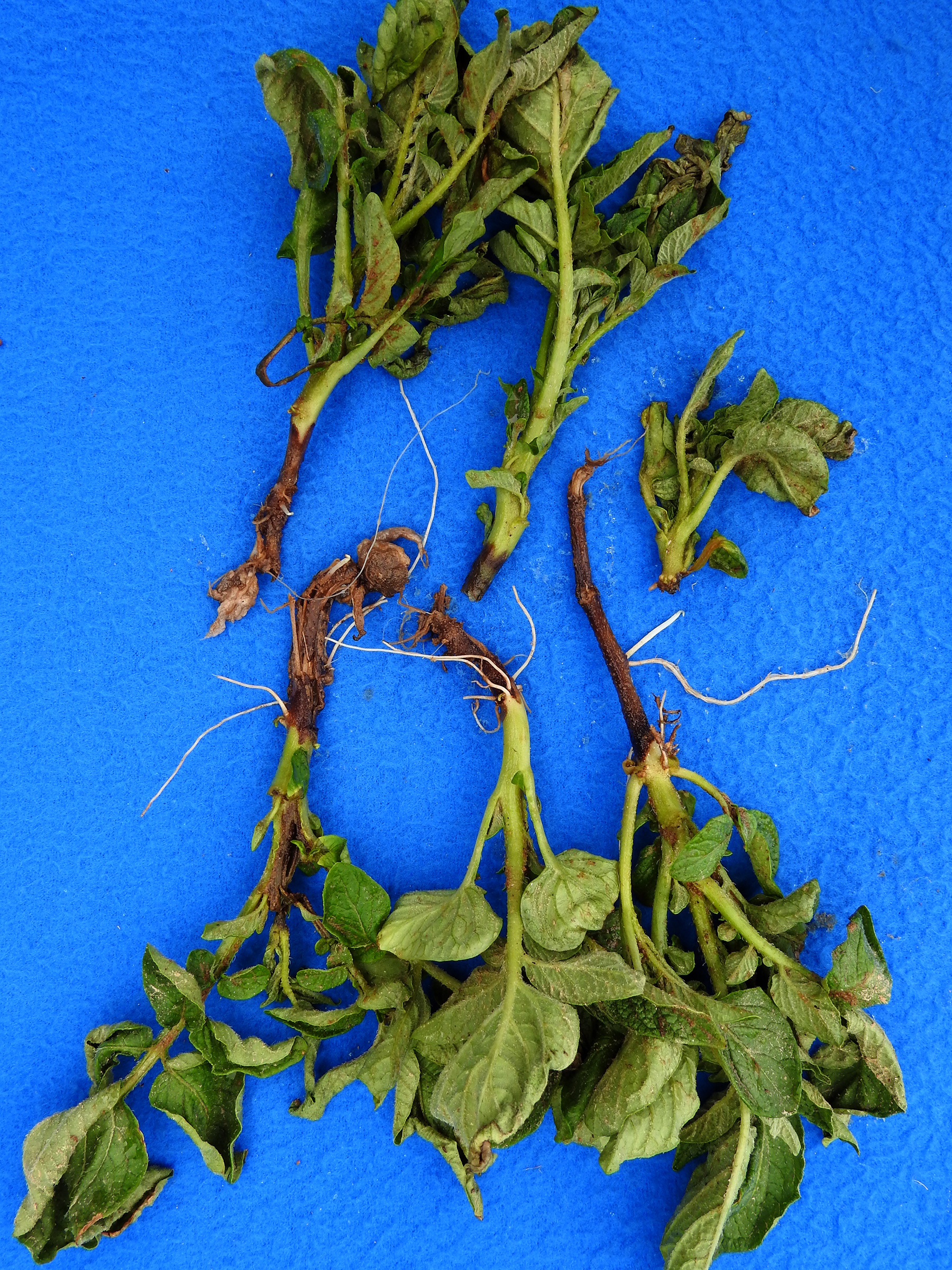 |
| Black leg on Potato Photo: M.McGrath, Cornell University |
Although black leg has long been a problem in Minnesota and surrounding states, a more aggressive species of the black leg pathogen, Dickeya dianthicola, has resulted in significant damage to potatoes in other regions in recent years. Several growers have expressed concerns about the potential of Dickeya dianthicola to be brought onto their farm on infected seed.
What is black leg disease?
Black leg is a bacterial disease of potato that causes soft rot of tubers, slimy black stem rot, yellowing, wilt and death of foliage. There are multiple bacterial plant pathogens associated with black leg including several species of Pectobacterium and several species of Dickeya.Do Dickeya species occur in Minnesota and the upper Midwest?
Dickeya dianthicola
and D. chrysanthami have been
identified in potatoes in Minnesota, North Dakota, and Wisconsin. Both
bacterial species can be carried on seed potatoes and are capable of causing black leg and soft rot of potato. Significant damage to potatoes can occur under warm wet conditions.
 |
| Plant collapse from black leg. Photo: M. McGrath, Cornell University |
How does black leg spread?
The black leg bacteria move long distance on infected seed
potatoes and are often first introduced to a farm through contaminated seed.
Bacteria may be present on the seed even if there are no visible symptoms of
disease. Bacteria can be spread on tools and equipment when seed potatoes are
cut and planted.
Within the plant, bacteria move through the plants vascular
system up the stem and into new developing tubers. Black leg bacteria can also be moved from
one plant to another on tools, by irrigation or rain water, and by insects.
Is disease free potato seed available?
Growers should not assume that any source of potato seed is clean. Potato seed can be tested for the presence of Dickeya spp. and some states will offer certification of potato seed. When purchasing certified potato seed, growers should ask what diseases the certified seed are tested for, how they are tested, and what percent infection rate is considered acceptable for certification.Many certification programs test for the presence of several viruses but not all programs test for the presence of the black leg bacteria. Dr. Charkowski of CSU suggests that even 1% infection rate in a seed lot can result in serious disease under the right conditions. It is recommended that growers select seed with zero black leg levels reported on the North American Certified Seed Potato Health Certificate.
Steps to preventing black leg
- Purchase certified seed with zero black leg from a reputable supplier.
- Plant whole seed if possible, this reduce the risk of disease spread through cutting.
- If cutting seed, disinfect knives with an effective sanitizer.
- Allow cut seed to suberize before planting.
- Plant into well drained soil.
- Take care not to wound seed when planting.
- Avoid excessive irrigation that could spread disease.
- Scout regularly for black leg symptoms. In the early stages of infection, plants may be stunted and growing poorly but not yet have distinct black discoloration on the stem.
- Collect suspicious plants in a clean bag and submit to the UMN Plant Disease Clinic for diagnosis.
More information about black leg of potato is available from
the USDA, the University of Wisconsin, and Cornell University.
Author: Michelle Grabowski, UMN Extension
Author: Michelle Grabowski, UMN Extension